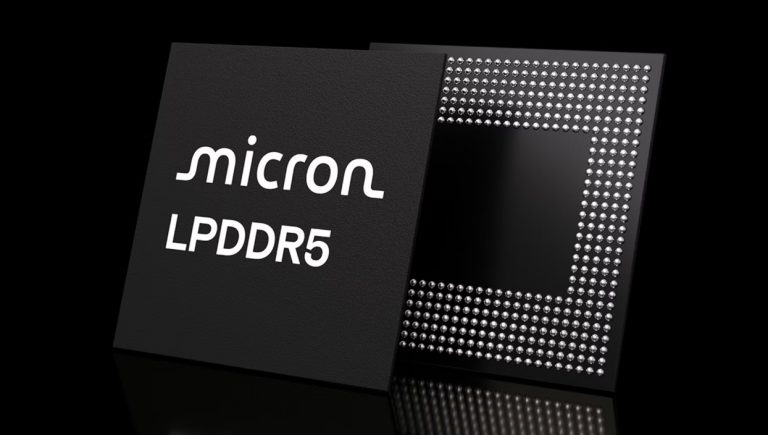Samsung Electronics has encountered a new challenge with the upcoming Galaxy S25 series of smartphones. Samsung has reportedly chosen Micron Technology as the main supplier of its LPDDR5 memory, rather than products from its own Samsung Electronics DS division. The decision marks the first time Samsung has not prioritized its own memory solutions in a flagship smartphone, and it has also raised questions about the competitiveness of Samsung's memory technology.
Micron becomes the main supplier:
According to a report by Taiwan Electronic Times, Micron has successfully replaced Samsung's DS division as the main memory supplier for the Galaxy S25 series of mobile phones due to its LPDDR5 memory products that are superior to Samsung's own memory in terms of performance and price. This shift is undoubtedly a major blow to Samsung's memory business, as Micron has secured the status of a major supplier in this area for the first time, marking Samsung's failure to prioritize its own memory among its flagship phones. Previously, Samsung had been the largest customer of its products, but this time it relied on external competitors, which clearly reflects the huge competitive pressure in the field of memory technology.
Behind this change are the technical and production challenges that Samsung faces in the field of memory technology. Samsung's DS division's 1b nm LPDDR5x DRAM failed to meet expectations in terms of heat and yield, which directly affected its ability to provide enough memory in this generation of Galaxy S25 phones. Due to the dual challenges of yield and performance, the MX division finally decided to choose Micron's LPDDR5 memory products, and after considering factors such as performance, price, and availability, Micron's advantages were obvious.
Challenges of the Samsung DS Division:
Samsung's DS division (Device Solutions Division) has been a leader in memory and semiconductors for the past few years, but it has also exposed a number of problems in the face of fierce competition. Especially in terms of high-bandwidth memory (HBM) technology, Samsung failed to catch up with its competitor SK hynix, and even its HBM3e product encountered a bottleneck in the NVIDIA verification process, failing to pass the verification, resulting in its layout in the field of AI accelerators and data centers suffered.
In addition, Samsung's performance in LPDDR memory has also failed to surpass Micron. Sources noted that Samsung's 1b nm LPDDR5x DRAM had issues with heat control and yield. This made it difficult for the Samsung DS division to provide memory for the Galaxy S25 series. As a result of these problems, the MX division chose Micron as the main supplier, marking that Samsung also has to admit the technological superiority of external competitors internally.

Figure: The Samsung Galaxy S25 series uses Micron's LPDDR5 memory
Impact on Samsung:
This decision not only affects the business of Samsung's DS division, but could also have a profound impact on the profitability of Samsung's MX division. Samsung's MX division is responsible for the production of smartphones, but because the performance of its own Exynos 2500 chip has not yet reached the requirements of the Galaxy S25 series phones, Samsung has had to switch to Qualcomm processors, which further increases production costs. Coupled with the high pricing of Micron's memory, the profitability of Samsung's MX division is under further pressure.
Samsung has long insisted on using its own memory products in the smartphone space to reduce costs and improve the vertical integration of technology. However, with the continuous advancement of Micron's technology and the intensification of market competition, Samsung's advantage in this field is being eroded. Although Samsung still has strong technology accumulation and R&D capabilities, it is clear that it is facing unprecedented challenges in memory technology.
Future Prospects:
Although Micron is currently the main memory supplier for the Galaxy S25 series, it is still possible for the Samsung DS division to gradually regain market share over the life of the Galaxy S25 series as Samsung's LPDDR5x process continues to improve, especially in subsequent models. As new technologies are invested and yields improve, Samsung's MX division may reconsider using more of its own memory products and eventually resume large-scale supply of the Galaxy series.
However, it should be noted that Micron's market share will further expand in the short term. Even if Samsung's DS division is able to improve its LPDDR technology, increased external competition means that Samsung may not be able to fully regain its previous market dominance. The rise of Micron as an external competitor not only broke Samsung's long-term monopoly in the field of memory, but also prompted Samsung to increase investment in future product research and development and technological innovation.
Conclusion:
Samsung's choice of Micron's LPDDR5 memory over its own products in the Galaxy S25 series reflects Samsung's competitive pressure in the memory technology space. While this decision may have a short-term impact on the market share and profitability of Samsung's DS division, it may also motivate Samsung to make greater efforts in areas such as technological innovation, cost control, and production efficiency. In the future, how Samsung responds to challenges from competitors such as Micron and SK hynix will determine its long-term competitiveness in the memory market.






